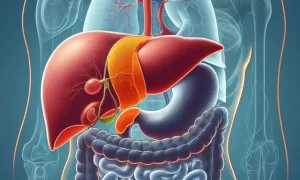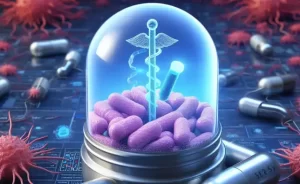Sulfur microbial diet increases precancerous lesions in early-onset CRC
- Normal Liver Cells Found to Promote Cancer Metastasis to the Liver
- Nearly 80% Complete Remission: Breakthrough in ADC Anti-Tumor Treatment
- Vaccination Against Common Diseases May Prevent Dementia!
- New Alzheimer’s Disease (AD) Diagnosis and Staging Criteria
- Breakthrough in Alzheimer’s Disease: New Nasal Spray Halts Cognitive Decline by Targeting Toxic Protein
- Can the Tap Water at the Paris Olympics be Drunk Directly?
Sulfur microbial diet increases precancerous lesions in early-onset CRC
Sulfur microbial diet increases precancerous lesions in early-onset CRC. Recently, a study published in the journal Gastroenterology found that a diet of sulfur microbes is associated with an increased risk of precancerous lesions of early-onset colorectal cancer (CRC).

Website screenshot
The microbial metabolism of dietary sulfur produces hydrogen sulfide (H2S), which is a gastrointestinal carcinogen, but there is currently no evidence to support its role in early tumor formation.
In this study, the researchers used the Nurse Health Study II (NHSII, 1991-2015) data to evaluate the long-term adherence to the sulfur microbial diet of 59013 people who underwent lower gastrointestinal endoscopy (based on 43 species of bacteria related to sulfur metabolism). Dietary index) and its risk of CRC precancerous lesions. The sulphur microbial diet is characterized by high intake of processed meat and low intake of mixed vegetables and legumes. Previous studies have suggested that these foods are related to the occurrence of CRC.
The results showed that the researchers recorded 2911 cases of early-onset adenomas. After adjusting for the identified risk factors, a higher sulphur microbial diet score was associated with an increased risk of early-onset adenoma (ORQ4 vs Q1=1.31, 95% CI 1.10-1.56, Ptrend=0.02), but not with serrated lesions.
Moreover, compared with the 1/4 women with the lowest sulphur microbial diet scores, the highest 1/4 women had a significantly higher risk of developing early-onset adenomas with greater malignant potential (villi/tubular villoma ORQ4 vs Q1 = 1.65, 95 %CI 1.12-2.43; Ptrend=0.04).
A similar trend in early-onset adenomas was observed in the evaluation of adolescent diet. In contrast, no clear correlation was observed for adenomas discovered after 50 years of age.
(source:internet, reference only)
Disclaimer of medicaltrend.org
Important Note: The information provided is for informational purposes only and should not be considered as medical advice.



